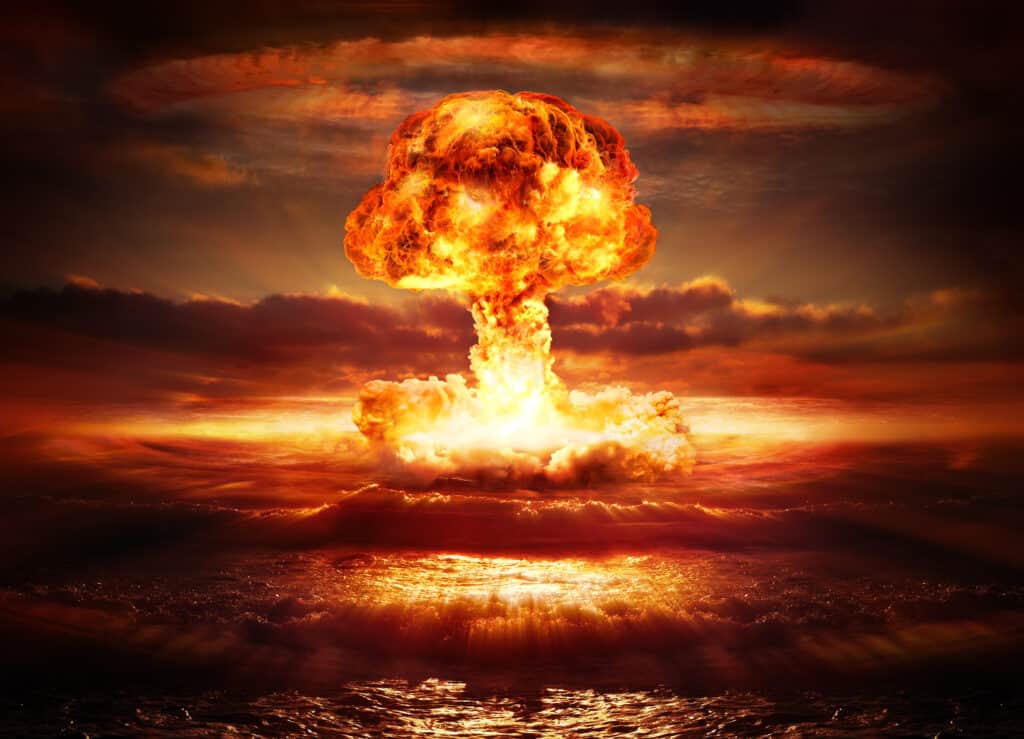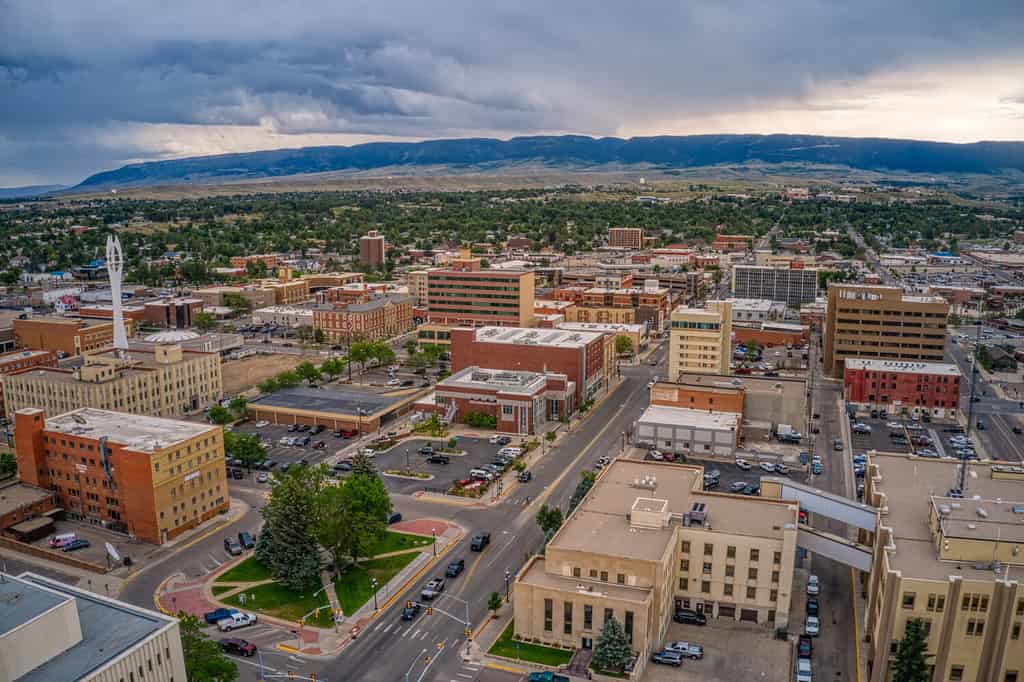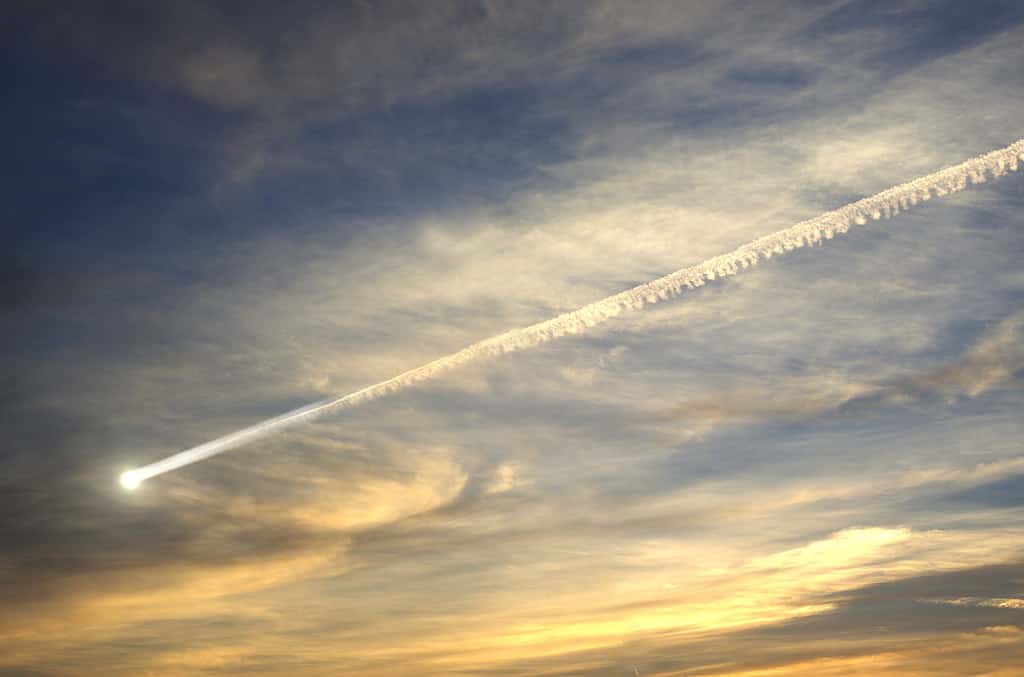If you ever get the chance to time travel, it’s best to avoid Jurassic-era Wyoming, about 190 million years ago. That was a very bad day for Wyoming. An area not far from Casper was slammed with a meteorite carrying the force of a nuclear bomb. The 4.3-mile Cloud Creed Crater it left behind is the biggest impact crater in Wyoming. Read on to learn more about this catastrophe and how likely it is to happen again.

Wyoming is known for its unspoiled, peaceful natural environment.
©R K Sewell Photography/Shutterstock.com
Cloud Creek Crater
Cloud Creek Crater is located in Natrona County about 48 miles northwest of the city of Casper. It is a crater 4.3 miles-wide but you can’t see much from the surface. It is now buried under 3,900 feet of rocks. How do we know it’s there, then? Drilling at different parts of the crater have revealed what lies beneath. By studying rock samples, geologists can tell the Earth at that depth was fractured and compressed by an intense impact. Geologists believe the crater is about 190 million years old, meaning the incident occurred in the early Jurassic Period. The object that caused it may have been as much as 200 feet in diameter. It likely made a 20-megaton explosion, stronger than many of our current nuclear weapons could cause.

The Cloud Creek meteor created a larger explosion than most nuclear weapons are capable of causing.
©Romolo Tavani/Shutterstock.com
What Damage Would It Do Today?
If an explosion this size happened in the same place today, it would be slightly smaller than the Mount St. Helens eruption of 1980, which was measured at 24 megatons. That disaster removed the mountaintop and unleashed a blast wave traveling 670 miles per hour. It utterly stripped the land of trees, houses, and any living thing for a distance of eight miles and did moderate damage for another eleven miles beyond that. Twelve states received measurable ashfall, with the hardest hit areas getting 5 inches of ash.
Casper is located 48 miles southeast of the Cloud Creek Crater and the prevailing winds in the area move west. If the meteor hit today, it is likely that the ash from the explosion would blow away from the city. However, they would surely hear it and see an ominous mushroom cloud rising into the atmosphere. People in smaller communities within 24 miles of the explosion could be severely burned and windows could be blown out. Moving in closer to the explosion, you would see increasing devastation, with trees flattened like a massive crop circle. It’s likely difficult-to-contain wildfires would erupt across a wide area. Wildlife would be decimated and it would take decades for the land to recover from such a catastrophe.

Casper is far enough away from the blast zone that it wouldn’t sustain damage if the meteor hit today.
©Jacob Boomsma/Shutterstock.com
Wyoming Animals, Then and Now
Jurassic Animals
At the beginning of the Jurassic period, Wyoming was mostly covered in sand dunes. At various points in prehistoric history, sea levels rose and fell. Paleontologists have found abundant evidence for both marine and terrestrial animals. Belemnites and oysters are examples of common sea creatures. The ancestors of crocodilians and mammals lived on land, while pterosaurs flew overhead.
Modern Animals
Wyoming today has over 100 species of mammals, including bison, mountain lions, wolves, grizzly bears, elk, moose, deer, antelope, and wild horses. Among its 400+ species of birds are bald eagles, osprey, hawks, and owls; ducks, geese, and other waterfowl; quail, pheasants, and grouse; and waterbirds like cranes, sandpipers, gulls, and herons. Wyoming has 12 species of amphibians and 22 species of reptiles. These include salamanders, frogs, toads, lizards, garter snakes, eastern racers, western hog-nosed snakes, and prairie rattlesnakes.

Wild horses are one of over 100 species of mammals roaming the wilds of Wyoming.
©Adventure_Images/Shutterstock.com
Could it Happen Again?
Meteors the size of a football field (360 feet) hit the earth about once every 2,000 years, wreaking havoc similar to that caused by the Cloud Creek meteor. A modern example is the Tunguska meteor that exploded over Russia in 1908. However, 70% of the Earth’s surface is water, and 50% of our land is thinly populated. So, for any meteor that hits the Earth today, there’s only about a 15% chance it would hit a heavily populated area. If you’re still concerned, remember you’re more likely to fall down the stairs than be hit by a meteor. And if you’re still worried, why not move to Casper? After all, what are the chances a meteor hits the same place twice?!

It’s much more likely a person will die from a common household accident than from a meteor.
©Krasowit/Shutterstock.com
The photo featured at the top of this post is © Triff/Shutterstock.com
Thank you for reading! Have some feedback for us? Contact the AZ Animals editorial team.







